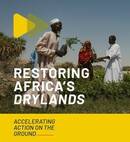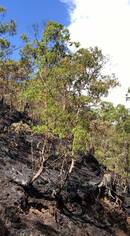Noticias

Climate finance options for forests are proliferating – but which ones can help countries reduce greenhouse gas emission at scale? There is a need and an opportunity for countries to learn from each other on using climate finance to support their development objectives. To provide a forum for exchange, the FAO and the Ministry of Agriculture, Forestry and Fisheries of Japan (MAFF) jointly ran a Climate Finance Seminar series “Opportunities and challenges associated with emerging carbon finance in forestry and land use.” Thirty-four countries from Asia, Latin America and Africa participated in the exchange and eleven countries shared specific insights.
The...

During the 25th session of the Food and Agriculture Organization of the United Nations (FAO) Committee on Forestry, the High-Level Dialogue on “Turning the Tide on Deforestation” engaged government, civil society, private sector actors, and representatives of FAO and the United Nations Environment Programme (UNEP). Held on 6 October 2020, this event was a rallying call for innovative solutions and catalytic partnerships to halt deforestation and transform food systems.
In light of the key role forests play in fighting climate change, biodiversity loss and poverty, as well as current trends in the state of forests, the United Nations Secretary-General, António Guterres, has called for strong efforts to turn the tide on deforestation, asking FAO to co-lead UN system efforts to accelerate progress...

Within the vast borders of Kazakhstan, the world’s ninth largest country, about two million families earn a living from the dairy sector. Small-scale farmers who own fewer than five cows produce 80 percent of the country’s raw milk.
Kazakhstan’s dairy industry has significant potential for growth, but it still faces many challenges. The country has been a member of the Eurasian Economic Union (EAEU) since 2015. As such, to stay competitive, its dairy farmers need to be able to supply domestic companies with raw milk that meets rigorous EAEU food safety standards.
But Kazakhstan is vast and milk collection centres sparse. Distances...

Technology and innovation for restoration monitoring is rapidly advancing supported by developments in geospatial technology and imagery. If deployed effectively across critical landscapes, these technical solutions for restoration planning and monitoring can drive restoration actions on the ground and contribute significantly to meeting the ambitious targets of the restoration, biodiversity and climate agendas. This session will spotlight key solutions and highlight ongoing challenges in ecosystem restoration monitoring with a focus on drylands. The session will feature a soft launch of the Framework For Ecosystem Restoration Monitoring (FERM) with a special focus on the integration and implementation of the Drylands Restoration...
Tracking forest fires from above
13/05/2021
13/05/2021

Every year, deliberately set fires and wildfires burn millions of hectares of forests and other types of vegetation around the world. In 2015, approximately 98 million hectares of forest were affected by fires (FAO, 2020). These fires occurred mainly in the tropics, where they damaged about 4 percent of the forest area.
The immediate and long-term impacts of wildfires can be devastating to communities, economies and forest ecosystems. The increase in forest wildfires around the world also threatens the long-term permanence of carbon stocks in all types of forests, forest regeneration and restoration projects. Many countries in Asia-Pacific are vulnerable to...

